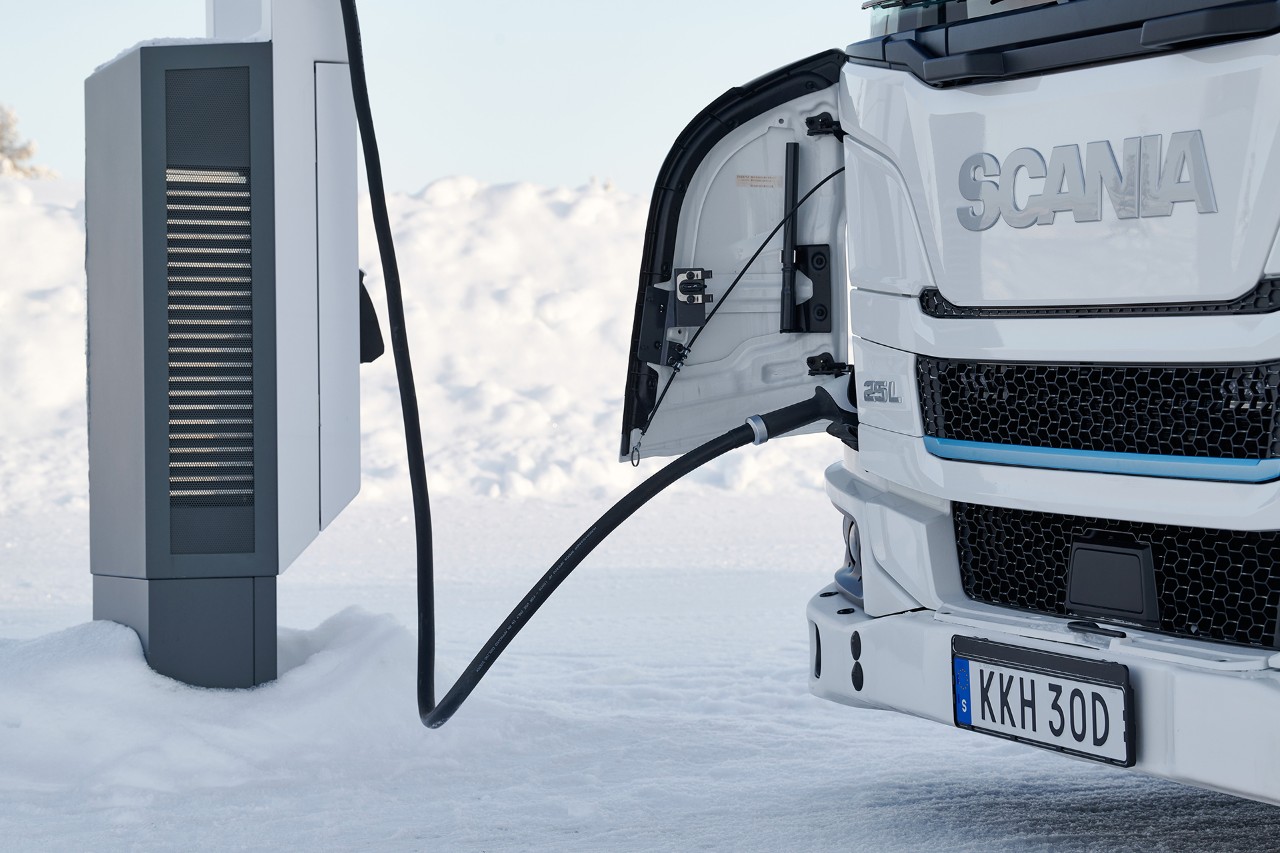
Scania’s batteries have a straight charging curve – here’s why that matters
Discover new exciting facts about e-mobility, including charging speed, carbon footprint, and the latest battery-electric vehicles from Scania.
Did you know?
With the recent launch of the next level of battery-electric vehicles, Scania has continued to expand its offer of electric trucks for a variety of urban and regional transport assignments.
Scania’s latest electric trucks come in both rigid and tractor formats, and R and S-series cabs are already available. Soon, the offer will be complemented by P and G-series cabs, which means you will be able to order Scania’s full cab programme.
The intensive development of tomorrow’s electrified transport solutions is inspiring many new technological ideas. One of those is Scania’s solar-powered truck, whose electrical propulsion is generated by energy provided by the vehicle’s own solar cells, sited in a trailer attached to a hybrid-electric vehicle.
A finished prototype has been handed over to long-term Scania haulage customer and partner Ernst Express, who will test it in actual operational conditions on Swedish roads.
The plug-in hybrid truck/tractor is connected to a trailer with additional batteries, which have 200 kWh of energy storage and act as a ‘power bank’ for the truck. They’re connected to the solar panel box that charges the power bank.
These findings come from a recent Scania study that compared the approximate cradle-to-grave carbon footprint of a battery-electric truck, with 40 tonnes gross train weight, used in regional haulage, with a diesel counterpart.
The study found that if there is access to green electricity, the vehicles’ break-even point is approximately 37,000 kilometres. And with the current European grid mix, the CO2 break-even point is at around 59,000 kilometres.
Read more

Charging
We help you find the right charging solution for your specific need.
